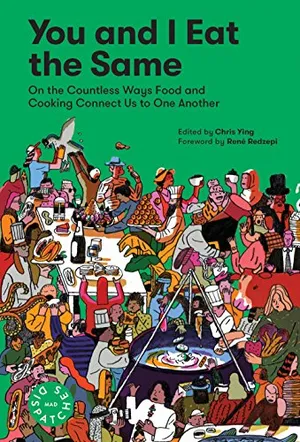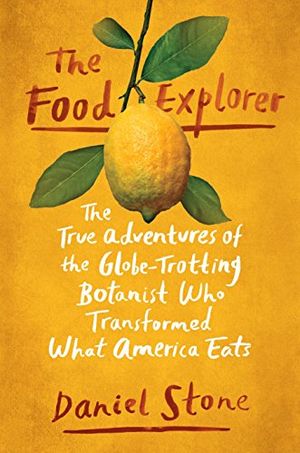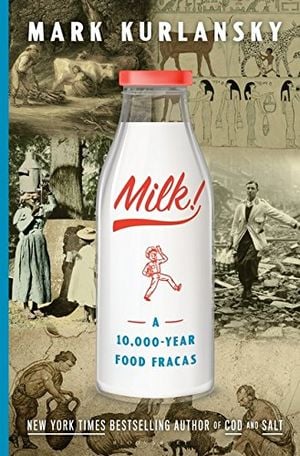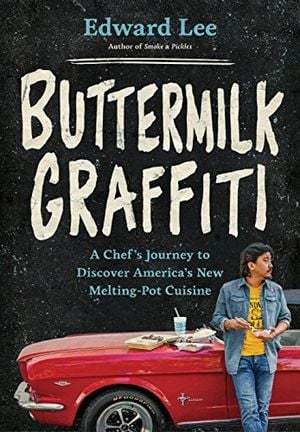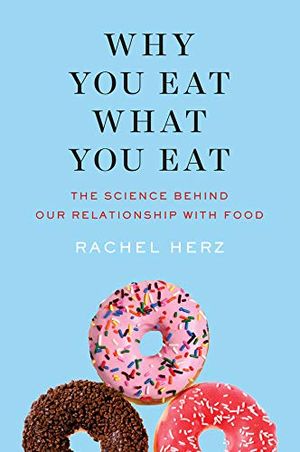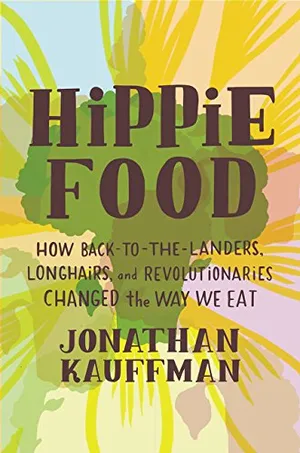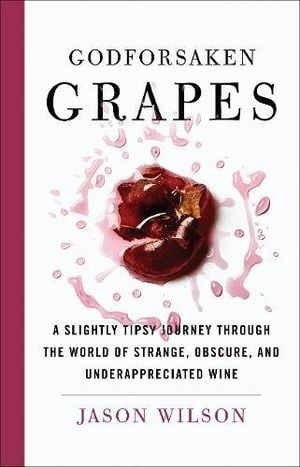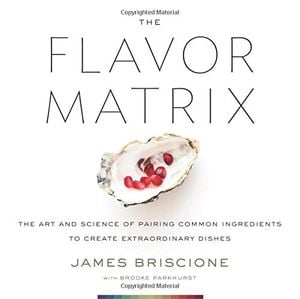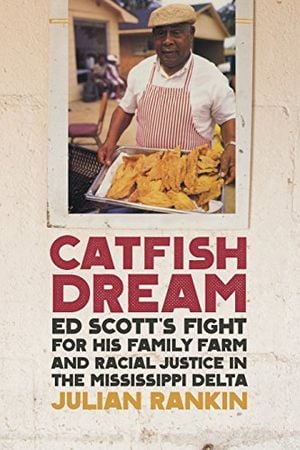The Ten Best Books About Food of 2018
These ten titles should satisfy readers hungry to learn more about the history and science of food
/https://tf-cmsv2-smithsonianmag-media.s3.amazonaws.com/filer/06/41/06413069-6d1f-40f2-ab6e-6549252b55f9/best-food-books.jpg)
The world around us may be aswirl in chaos, but food writing was an undeniable bright spot in 2018. This year’s best offerings tackle a number of topics, including why people around the world eat certain things, how one defines “American” food, and why some ingredients taste good with other ingredients. Many of them have a deeper message, too: We’re all in this together. Food has an uncanny ability to connect people, because, after all, we all eat.
From essays on the global ubiquity of fried chicken to explainers on the ascension of tofu in the mainstream American diet, this year’s food books address complex subjects with humor, vivid detail and uncompromising skill. They’ll also make you very, very hungry, as only the best food books can.
You and I Eat the Same: On the Countless Ways Food and Cooking Connect Us to One Another
In the opening pages of You and I Eat the Same, an impressive collection of essays and stories about how food connects people across political lines and cultural borders, editor Chris Ying admits that he wasn’t initially sold on the book’s title. “I’m still not prepared to say that you and I eat exactly the same,” Ying admits in the introduction. “But after reading what our contributors had to say about the ways food links us together, I feel distinctly closer to other people.” Maybe that’s because it’s hard to argue with many of the book’s points: For one, myriad cultures wrap meat in some form of flatbread (think tacos, dosas, scallion pancakes, and more). Consider, too, that people the world over prepare their own version of fried chicken (Koreans, Japanese, and Americans, to name a few). The book is the first in a series by MAD, a global food symposium launched by modernist chef René Redzepi, who co-owns the groundbreaking Copenhagen restaurant Noma. Redzepi penned the forward, and in his own essay contribution, “If It Does Well, It Belongs Here,” promotes the idea of venturing outside one’s culinary comfort zone. Hear, hear!
The Food Explorer: The True Adventures of the Globe-Trotting Botanist Who Transformed What America Eats
In the annals of American history, botanists tend to draw a short stick in the glory department. And yet, much of how Americans eat today—specifically, our predilection for things like avocado toast, mango smoothies, and yes, even kale salads—is thanks to the 19th-century explorer David Fairchild. In this globe-trotting biography, journalist Daniel Stone dives into Fairchild’s many adventures, misadventures and close calls on behalf of the U.S. Department of Agriculture. Centuries later, these exploits’ mark on the American palate remains indelible. “In 1908, few people had seen a soybean,” Stone writes. And yet, within a century, “the evolved descendants of soybeans that [Fairchild’s employee, Frank Meyer] shipped back would cover the Midwest of the United States like a rug. Soybeans would be applied to more diverse uses than any other crop in history.”
Milk!: A 10,000-Year Food Fracas
Food historian Mark Kurlansky is famous for his deep dives on singular subjects, which range from salt to cod to oysters, and his latest work is everything one expects from this obsessive researcher. Milk! delves into the world’s most complex cultural, economic and culinary stories centered around milk, from Greek creation myths to modern pasteurization. In the New York Times Book Review, reviewer Rich Cohen aptly describes it as the “sort of book that Proust might have written had Proust become distracted by the madeleine ... you step away from this book with a new vantage on history, a working knowledge of exotic milk and cheese, acceptance of your mom, a sense of what makes Mark Kurlansky tick and a weird craving for buffalo mozzarella."
Buttermilk Graffiti: A Chef’s Journey to Discover America’s New Melting-Pot Cuisine
Few chefs are as well equipped to tackle the American melting pot as four-time James Beard award-winning chef Edward Lee, who famously blends his Korean heritage with the culinary traditions of the American South in his four restaurants. In Buttermilk Graffiti, a book that’s half travelogue and half memoir, Lee investigates the true spirit of America through its food, his explorations pulling him from a Uyghur café in New York’s Brighton Beach to the sugar-dusted tables at Café du Monde in New Orleans and beyond. The book includes 40 of Lee’s recipes—think dishes like miso creamed corn, bourbon nuoc cham-roasted oysters and green tea beignets—all of them inspired by his travels.
Why You Eat What You Eat: The Science Behind Our Relationship with Food
The factors that determine your eating habits are vast and complex, posits neuroscientist Rachel Herz in Why You Eat What You Eat, which manages to decode a host of bone-dry academic studies in a way that’s both conversational and fascinating. Herz explains that taste and emotions are fundamentally intertwined: “why eating sweets can make us kinder,” she writes, “how depression can make grapes taste more sour, and how bitterness can change our moral outlook.” Skeptical? Don’t worry, Herz has the facts to back up her claims. She also explains why bacon-scented underwear exists, which, depending on your vantage point, might just be Why You Eat What You Eat’s greatest contribution of all.
The Seven Culinary Wonders of the World: A History of Honey, Salt, Chile, Pork, Rice, Cacao, and Tomato
In the history of the world, seven food staples—honey, salt, chile, pork, rice, cacao and tomato—have emerged as some of the most essential to the human experience, writes Jenny Linford in The Seven Culinary Wonders of the World. Beautifully illustrated by Alice Pattullo, the work peels back the layers of each ingredient, tracing their movements around the world and the ways in which they forever changed the cultures that adopted them. From the introduction of tomatoes to Europe by Spanish conquistadors to the earliest cultivation of rice in China’s Pearl Valley, Linford’s stories reveal that humans are more connected than we ever thought possible.
Hippie Food: How Back-to-the-Landers, Longhairs, and Revolutionaries Changed the Way We Eat
Staples like brown rice and yogurt hardly warrant a raised eyebrow in 2018, but back in the 1960s and 1970s, such ingredients were the provenance of the long-haired and the radical. In Hippie Food, food writer Jonathan Kauffman examines the unusual men and women who bucked culinary norms and introduced tofu (and bean sprouts and granola and whole-grain bread) to the mainstream, from charismatic gurus to back-to-the-landers. Even those familiar with this tale might learn a thing or two. “I thought I knew this story,” writes Michael Pollan in his New York Times review, “but Kauffman has added a lot to it, in the way of both fresh information and narrative verve. In his telling, hippie food resulted from the convergence, around 1970, of three different strains of food ideology: health food faddism; ethical vegetarianism; and a post-Silent Spring critique of industrialized food and farming.”
Godforsaken Grapes: A Slightly Tipsy Journey through the World of Strange, Obscure, and Underappreciated Wine
The number of wine grape varieties in the world number about 1,400, but the vast majority of all wine drunk worldwide is made from a mere 20 of them. So explains drinks writer Jason Wilson in Godforsaken Grapes, which places obscure and underappreciated fruit under a long overdue spotlight, from the golden-skinned Bordeaux variety Sémillon to the tannic, deep-red Boğazkere grape from southeastern Anatolia, Turkey. Drinking his way across the world’s most famous wine regions, Wilson uncovers the geopolitical, economic and cultural factors that influence our wine choices. We highly recommend that you read this with a glass of vino in hand.
The Flavor Matrix: The Art and Science of Pairing Common Ingredients to Create Extraordinary Dishes
The world’s top flavor expert might be… a computer? In The Flavor Matrix, culinary school instructor James Briscione breaks down revelations made by Watson, IBM’s artificial intelligence computer system, which manages to make flavor connections on the molecular level that eluded even Briscione’s advanced palate. The unlikeliest of pairings? Strawberry and mushroom. Blueberry and horseradish. Clam and melon. Even avocado and cocoa are a match made in culinary heaven, apparently. Briscione and Parkhurst back up Watson’s work with recipes and detailed infographics, making The Flavor Matrix the food-pairing bible you never knew you needed.
Catfish Dream: Ed Scott's Fight for His Family Farm and Racial Justice in the Mississippi Delta
Ed Scott Jr. is perhaps not a name familiar to many Americans, but it should be. His experience and struggles with racism are the focus of Catfish Dream, an intimate portrait of the first nonwhite owner and operator of an American catfish plant. “During his lifetime, many thought of him as mythic; others, pure myth,” writes author Julian Rankin in the introduction. “When he dug up 160 acres of arable farmland and turned them into catfish ponds in 1981, gossip and folktale made it sound like black magic. If it is magic, it can’t be duplicated. But if exceptionalism is man-made, then it can be made again.” Part of the Southern Foodways Alliance’s Studies in Culture, People, and Place series, Catfish Dream presents an emblem for African American success even in the face of tremendous obstacles.
Having trouble seeing our list of books? Turn off your ad blocker and you'll be all set. For more recommendations, check out The Best Books of 2018.
A Note to our Readers
Smithsonian magazine participates in affiliate link advertising programs. If you purchase an item through these links, we receive a commission.
